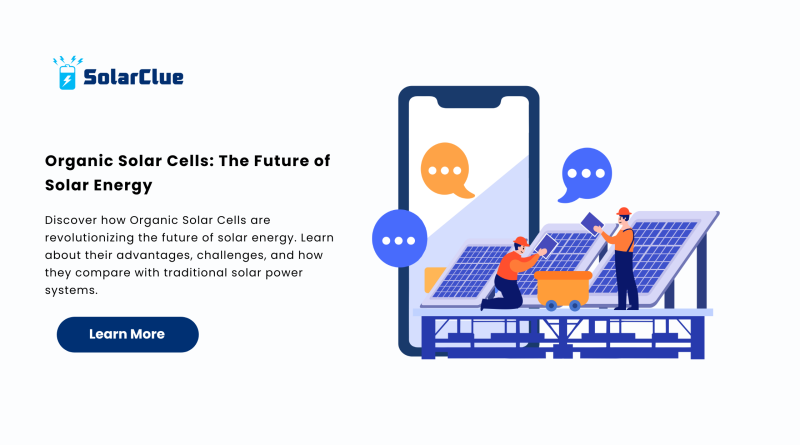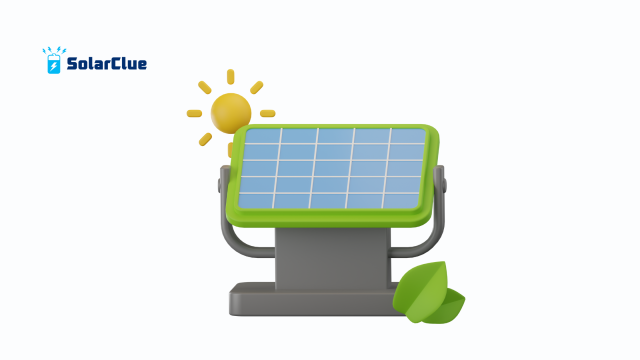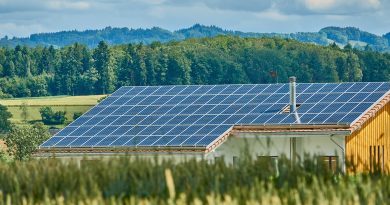Organic Solar Cells: The Future of Solar Energy
The global demand for solar energy is increasing rapidly as the world shifts towards renewable energy sources. Traditional solar cells, often made from silicon, dominate the market today. However, a new contender is emerging—Organic Solar Cells. These innovative solar technologies are lightweight, flexible, and eco-friendly, making them an exciting part of the future of solar power. By understanding what organic solar cells are and how they work, you can see why they might be the next big breakthrough in the renewable energy industry.
Table of Contents
- 1 What Are Organic Solar Cells?
- 2 How Do Organic Solar Cells Work?
- 3 Advantages of Organic Solar Cells
- 4
- 5 Challenges Facing Organic Solar Cells
- 6 Organic Solar Cells vs. Traditional Solar Cells
- 7 Applications of Organic Solar Cells
- 8 The Future of Organic Solar Cells
- 9 Why Organic Solar Cells Are the Future of Solar Power
- 10 FAQs on Organic Solar Cells
- 11 Conclusion
What Are Organic Solar Cells?
Organic Solar Cells (OSCs) are a type of photovoltaic technology that uses organic polymers or molecules to absorb sunlight and convert it into electricity. Unlike conventional silicon-based solar cells, which are rigid and costly to produce, organic solar cells can be manufactured using low-cost materials and flexible substrates. This makes them versatile and ideal for applications where traditional solar power systems are impractical.
Key features of organic solar cells include:
-
Lightweight construction that reduces installation challenges.
-
Flexible design suitable for clothing, windows, and portable devices.
-
Lower production costs compared to traditional silicon panels.
-
Eco-friendly materials with minimal environmental impact.
How Do Organic Solar Cells Work?
The working principle of organic solar cells is similar to that of traditional solar power technologies but with different materials. Here’s a simple breakdown:
-
Light Absorption: Organic semiconductors absorb photons from sunlight.
-
Exciton Generation: The absorbed light generates excitons (electron-hole pairs).
-
Charge Separation: Special layers in the organic material separate these charges.
-
Current Flow: The separated charges move towards electrodes, creating electric current.
This process allows OSCs to generate clean electricity, contributing to the growing global need for sustainable solar power systems.
Advantages of Organic Solar Cells
Organic solar cells provide unique benefits compared to conventional solar panels.
1. Flexibility and Versatility
Unlike rigid silicon solar cells, organic solar cells can be manufactured on flexible materials, making them usable on curved surfaces, textiles, and even windows. This expands their applications beyond rooftops into everyday products.
2. Lightweight and Portable
Because they use thin films, organic solar cells are extremely light, making them easy to transport and install. This is a huge advantage in areas where heavy solar power systems are not practical.
3. Cost-Effective Manufacturing
Traditional silicon panels require expensive materials and energy-intensive processes. Organic solar cells, on the other hand, can be made with cheaper printing techniques, lowering production costs significantly.
4. Eco-Friendly Materials
OSCs reduce the environmental footprint of manufacturing by avoiding rare or toxic materials. This aligns with the core goal of solar energy—to create a greener and more sustainable world.
Challenges Facing Organic Solar Cells
While promising, organic solar cells still face limitations that need addressing before they can compete with mainstream solar cells.
1. Lower Efficiency
Currently, organic solar cells achieve efficiency levels between 10–18%, compared to 20–25% for silicon-based solar power systems. Researchers are actively working to improve this.
2. Shorter Lifespan
OSCs degrade faster when exposed to sunlight and moisture, which reduces their durability compared to traditional solar panels. Protective coatings and encapsulation are being developed to solve this issue.
3. Limited Commercial Availability
Although research is advancing quickly, organic solar cells are not yet widely available in the consumer market. More investment and large-scale production are required to make them accessible.
Organic Solar Cells vs. Traditional Solar Cells
When comparing organic solar cells with traditional solar cells, it’s clear that each has its strengths.
| Feature | Organic Solar Cells | Silicon Solar Cells |
|---|---|---|
| Efficiency | 10–18% | 20–25% |
| Flexibility | High (bendable) | Low (rigid) |
| Cost | Lower manufacturing cost | Higher production cost |
| Durability | Lower (short lifespan) | Higher (25+ years) |
| Applications | Wearables, windows, portable devices | Rooftops, large-scale solar farms |
This comparison shows that while organic solar cells may not replace silicon panels completely, they can complement them in areas where flexibility and lightweight design matter more than maximum efficiency.
Applications of Organic Solar Cells
The versatility of organic solar cells opens doors for innovative uses of solar energy.
-
Building-Integrated Photovoltaics (BIPV): Transparent OSCs can be integrated into windows, allowing buildings to generate electricity while maintaining aesthetics.
-
Wearable Technology: Flexible OSCs can be embedded in clothing or accessories to power devices like smartwatches or fitness trackers.
-
Portable Electronics: Organic solar cells can provide energy for phones, laptops, and outdoor equipment.
-
Rural and Off-Grid Areas: Their lightweight and low-cost nature makes them suitable for providing electricity in remote locations without access to traditional power grids.
The Future of Organic Solar Cells
The future of organic solar cells looks promising as research continues to improve their efficiency and durability. With advancements in nanotechnology, material science, and protective coatings, OSCs could soon compete with traditional solar power systems.
Governments and research institutions worldwide are investing heavily in this technology, and companies are beginning to test pilot projects. The ability to combine solar energy with everyday surfaces like walls, clothing, and vehicles suggests that organic solar cells could revolutionize how we think about energy production.
Why Organic Solar Cells Are the Future of Solar Power
As the world moves towards sustainable energy, innovations like organic solar cells are crucial. They offer a complementary technology to existing solar power systems, making renewable energy more accessible and versatile. Their potential to be integrated into daily life makes them not just an energy source but a lifestyle revolution.
In the future, homes, offices, and even personal gadgets could all be powered by organic solar cells, reducing reliance on fossil fuels and accelerating the shift to a clean-energy world.
FAQs on Organic Solar Cells
Q1: What are organic solar cells?
Organic solar cells are lightweight, flexible solar cells made from organic polymers that convert sunlight into electricity.
Q2: Are organic solar cells more efficient than silicon solar panels?
Not yet. Traditional solar cells are more efficient, but research is rapidly improving the performance of organic solar cells.
Q3: What are the advantages of organic solar cells?
They are flexible, lightweight, cost-effective to produce, and eco-friendly.
Q4: Can organic solar cells be used in homes?
Yes, but currently they are better suited for niche applications like windows, wearables, and portable devices rather than full-scale home solar power systems.
Q5: What is the future of organic solar cells?
With ongoing research, they are expected to become more efficient and durable, eventually playing a significant role in the renewable solar energy landscape.
Conclusion
Organic Solar Cells represent an exciting step forward in the future of solar energy. While they may not yet match traditional silicon-based solar power systems in efficiency and lifespan, their flexibility, lightweight design, and eco-friendly benefits make them a revolutionary technology. As advancements continue, these innovative solar cells could transform how we power our homes, offices, and devices, making clean energy more integrated into our daily lives. To stay updated on the latest trends in solar power and sustainable technologies, explore our insights at solarclue.com and blog.solarclue.com




